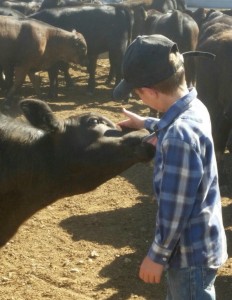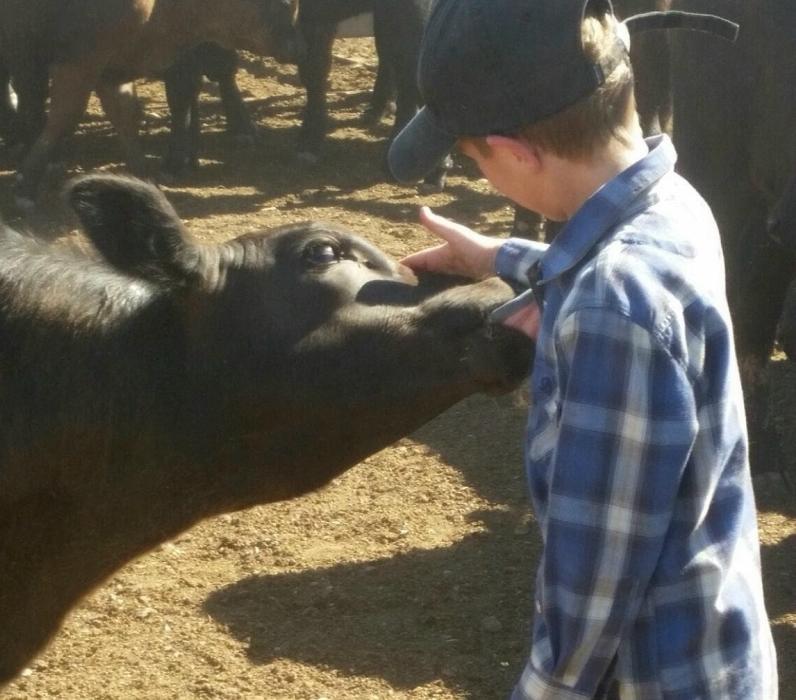
Pictured is Mackenzie Tanner who was helping James and Emily McCormack in the cattle yards at Mansfield in Victoria, with his new Te Mania friend.
It is no secret that docile cattle grow faster, have better meat quality, are more fertile and are safer to handle, but there are many other benefits including:
- Lower production costs
- Reduction in damage to infrastructure – yards and fences.
- Decreased risk of injury and stress to animals.
- Decreased weight loss during transit.
- Decreased risk of dark cutters in the chiller.
- Improved eating quality (more tender beef).
We prides ourselves on breeding cattle with good temperament while meeting expectations for all economic traits.
Not only do we select for temperament in the sires we use in our breeding programme, all our cattle are assessed and scored for docility.
While some variation in docility in cattle can be put down to the environment and good stockmanship, a good portion of the variation in temperament is due to the genetics.
Research tells us that temperament is a highly heritable trait, so this makes selection for temperament very important.
In a multi trait selection model where you need to consider many traits in every joining decision and weight them according to their economic performance, temperament is one that we have been focusing on by selection for many years. Importantly, selecting for temperament does not negatively affect other traits.
As with all traits, you get very little genetic improvement through culling alone, the major steps in genetic improvement in any herd, come from selecting the right animal in the first place. This applies particularly to the selection of bulls because each bull used contributes his genes to many descendants in the herd.
The decisions that you make in selecting animals to contribute to the genetic pool in your herd effects 100% of the animals. Selecting animals that you know are going to effect the progeny’s genetics – because you know the Estimated Breeding Values (EBV’s) of those animals – is much more significant than just selecting animals on what they look like.
Most of the animals that end up in the cull pen, are there for non-genetic reasons and therefore removing them from the herd is only making a very small difference to the herd’s beneficial genetic makeup.
Therefore, a joint selection approach is required – genetics (genotype), structure and other observable characteristics (phenotype) must be considered in all purchasing decisions.
Selecting for temperament is one important factor when selecting your next Angus bull. As well as observing the animal directly, refer to the docility EBV in our sale catalogue.
All profit driving traits can be selected for at once. Profit is a trait. Just as many individual characteristics make up an animals growth rate, so too, do many individual characteristics make up an animals profitability. All of these characteristics can be selected at the same time.
150+ Quiet Achievers are for sale on March 2nd at our annual bull sale.





